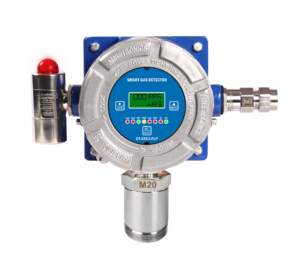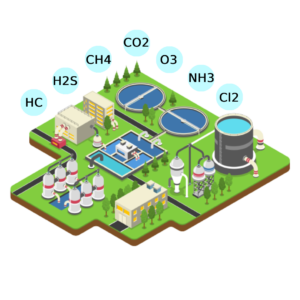Gas Detection at Wastewater Treatment Plants


Wastewater treatment plants are associated with various gas hazards due to the use as well as generation of a number of toxic and flammable gases. Different gases are to be employed and also produced in order to treat the waste water into a state that is suitable for discharge in the environment. Gases like Methane (CH4), Hydrogen Sulphide (H2S), Chlorine (Cl2), Carbon Dioxide (Co2), Oxygen (O2), Ammonia (NH3), Ozone (O3), etc. are commonly involved.
Gas hazards at wastewater treatment plants are most likely to occur at sources such as the aeration tanks, sewers, deodorizing plants, and sludge digester tanks.
Gases that should be monitored at Water Treatment plants:
Methane (CH4) – a highly flammable gas mostly produced during sludge decomposition.

Hydrogen sulphide (H2S) – a very toxic gas which is naturally present as well as produced in wastewater treatment. High concentration level can damage the human olfactory nerves.
Ammonia (NH3), Ozone (O3) and Chlorine (Cl2) – toxic gases that are used in the decontamination stage of wastewater treatment.
Carbon Dioxide (CO2) – produced during sludge decomposition and production of Biogas.
Oxygen (O2) – gets displaced due to CO2 production causing asphyxiation and affects the respiratory system.
Hence, it becomes crucial to have a reliable gas detection system at each processing unit of the wastewater treatment plant in order to monitor and detect these hazardous gases and protect people, premises and environment.
Ambetronics Engineers Pvt. Ltd. has been in the field of gas detection since the last 30 years and are experts of gas detection in wastewater treatment plants. It is essential to consult gas detection experts like us before making a decision to procure a reliable gas detection system.
Email: sales11@ambetronics.com
Website: www.ambetronics.com



